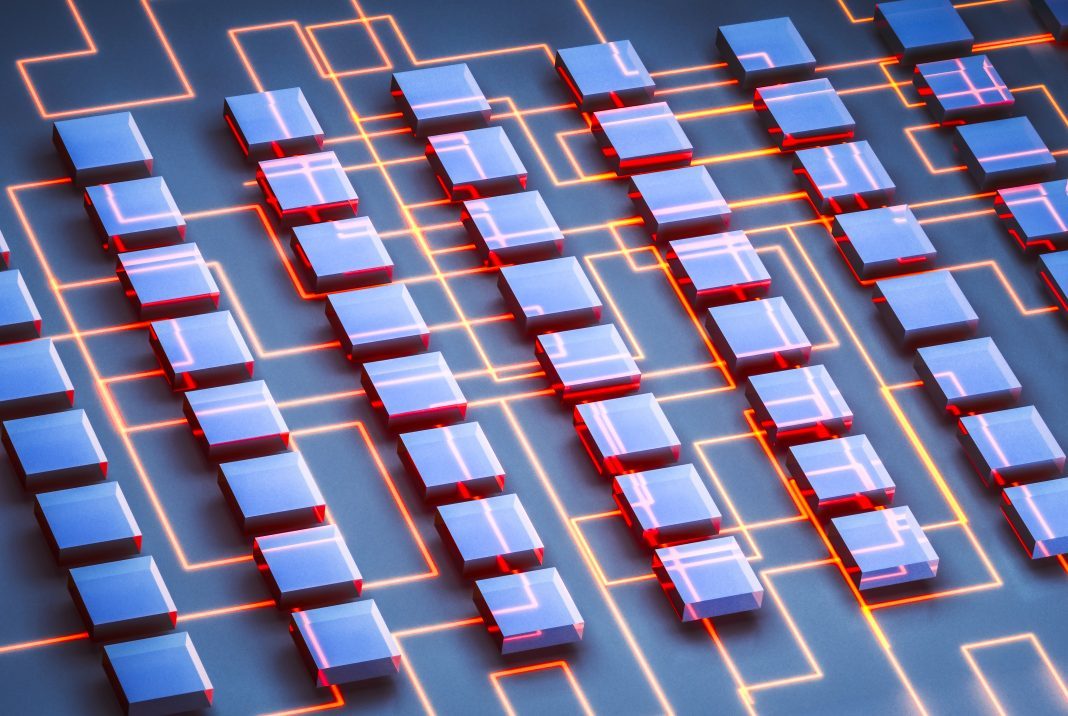A team of electrical engineers, computer scientists, and biomedical engineers at the University of California-Irvine report that they have created a new lab-on-a-chip that can help study tumor heterogeneity to reduce resistance to cancer therapies.
In a paper “A Machine Learning‐Assisted Nanoparticle‐Printed Biochip for Real‐Time Single Cancer Cell Analysis” published in Advanced Biosystems, the researchers describe how they combined artificial intelligence, microfluidics, and nanoparticle inkjet printing in a device that enables the examination and differentiation of cancers and healthy tissues at the single-cell level.
“Cancer cell and tumor heterogeneity can lead to increased therapeutic resistance and inconsistent outcomes for different patients,” said lead author Kushal Joshi, a former UCI graduate student in biomedical engineering. The team’s biochip addresses this problem by allowing precise characterization of a variety of cancer cells from a sample, according to paper co-author Rahim Esfandyarpour, PhD, UCI assistant professor of electrical engineering & computer science as well as biomedical engineering.
“Single-cell analysis is essential to identify and classify cancer types and study cellular heterogeneity. It’s necessary to understand tumor initiation, progression and metastasis in order to design better cancer treatment drugs,” says Rahim Esfandyarpour, UCI assistant professor of electrical engineering & computer science as well as biomedical engineering.
“Most of the techniques and technologies traditionally used to study cancer are sophisticated, bulky, expensive, and require highly trained operators and long preparation times.”
He notes that his group overcame these challenges by combining machine learning techniques with accessible inkjet printing and microfluidics technology to develop low-cost, miniaturized biochips that are simple to prototype and capable of classifying various cell types.
“Cancers are a complex conglomerate of heterogeneous cell populations with varying genotypes and phenotypes. The intercellular heterogeneity within the same tumor and intratumor heterogeneity within various tumors are the leading causes of resistance to cancer therapies and varied outcomes in different patients. Therefore, performing single‐cell analysis is essential to identify and classify cancer cell types and study cellular heterogeneity,” write the investigators.
“Here, the development of a machine learning‐assisted nanoparticle‐printed biochip for single‐cell analysis is reported. The biochip is integrated by combining powerful machine learning techniques with easily accessible inkjet printing and microfluidics technology. The biochip is easily prototype‐able, miniaturized, and cost‐effective, potentially capable of differentiating a variety of cell types in a label‐free manner. n‐feature classifiers are established, and their performance metrics are evaluated. The biochip’s utility to discriminate noncancerous cells from cancerous cells at the single‐cell level is demonstrated.
“The biochip’s utility in classifying cancer sub‐type cells is also demonstrated. It is envisioned that such a chip has potential applications in single‐cell studies, tumor heterogeneity studies, and perhaps in point‐of‐care cancer diagnostics–especially in developing countries where the cost, limited infrastructures, and limited access to medical technologies are of the utmost importance.”
In the apparatus, samples travel through microfluidic channels with carefully placed electrodes that monitor differences in the electrical properties of diseased versus healthy cells in a single pass. The UCI researchers’ innovation was to devise a way to prototype key parts of the biochip in about 20 minutes with an inkjet printer, allowing for easy manufacturing in diverse settings. Most of the materials involved are reusable or, if disposable, inexpensive.
Another aspect of the invention is the incorporation of machine learning to manage the large amount of data the tiny system produces. This branch of AI accelerates the processing and analysis of large datasets, finding patterns and associations, predicting precise outcomes, and aiding in rapid and efficient decision-making.
By including machine learning in the biochip’s workflow, the team has improved the accuracy of analysis and reduced the dependency on skilled analysts, which can also make the technology appealing to medical professionals in the developing world, says Esfandyarpour.
“The World Health Organization says that nearly 60 percent of deaths from breast cancer happen because of a lack of early detection programs in countries with meager resources,” he explains. “Our work has potential applications in single-cell studies, in tumor heterogeneity studies and, perhaps, in point-of-care cancer diagnostics – especially in developing nations where cost, constrained infrastructure and limited access to medical technologies are of the utmost importance.”



